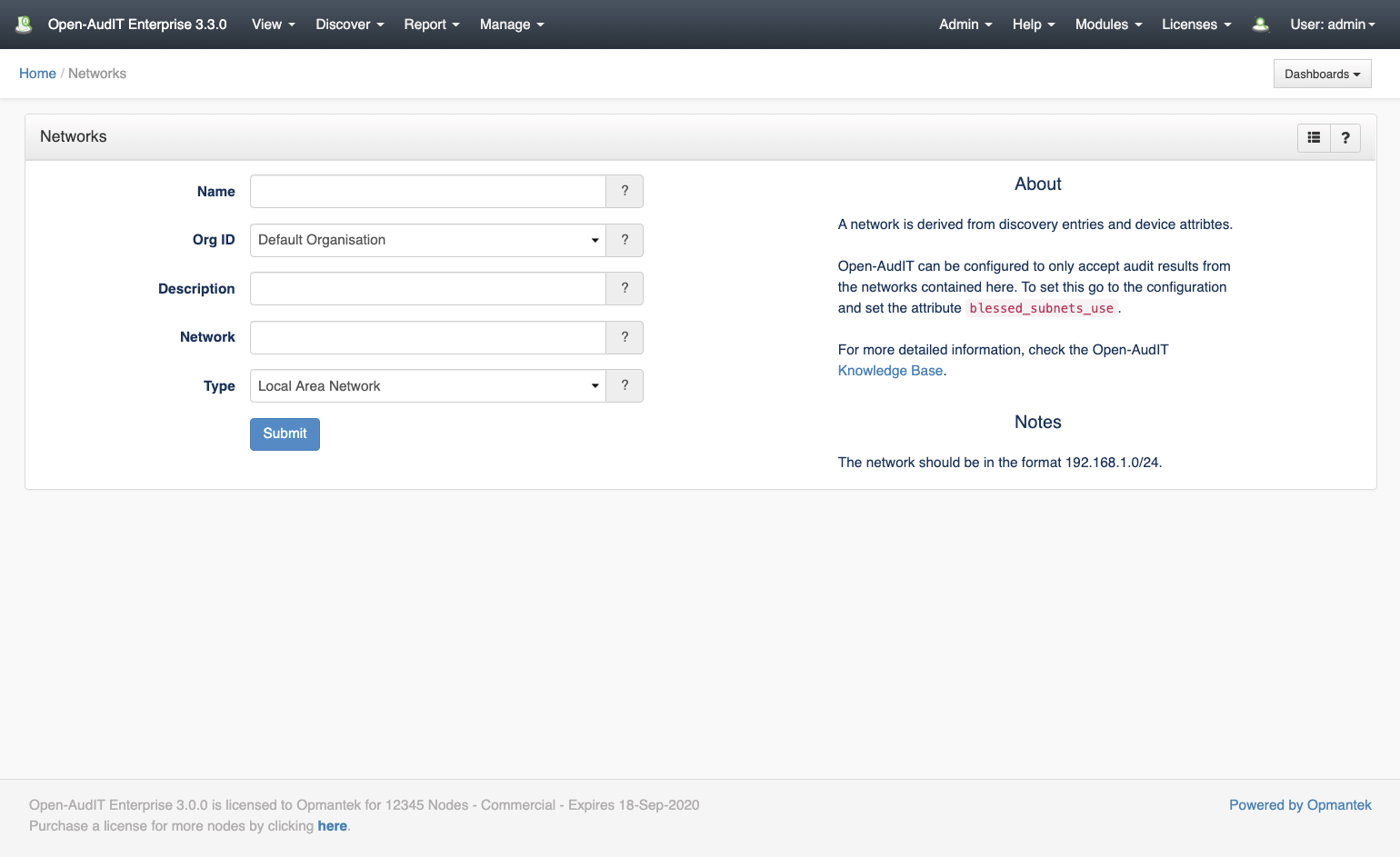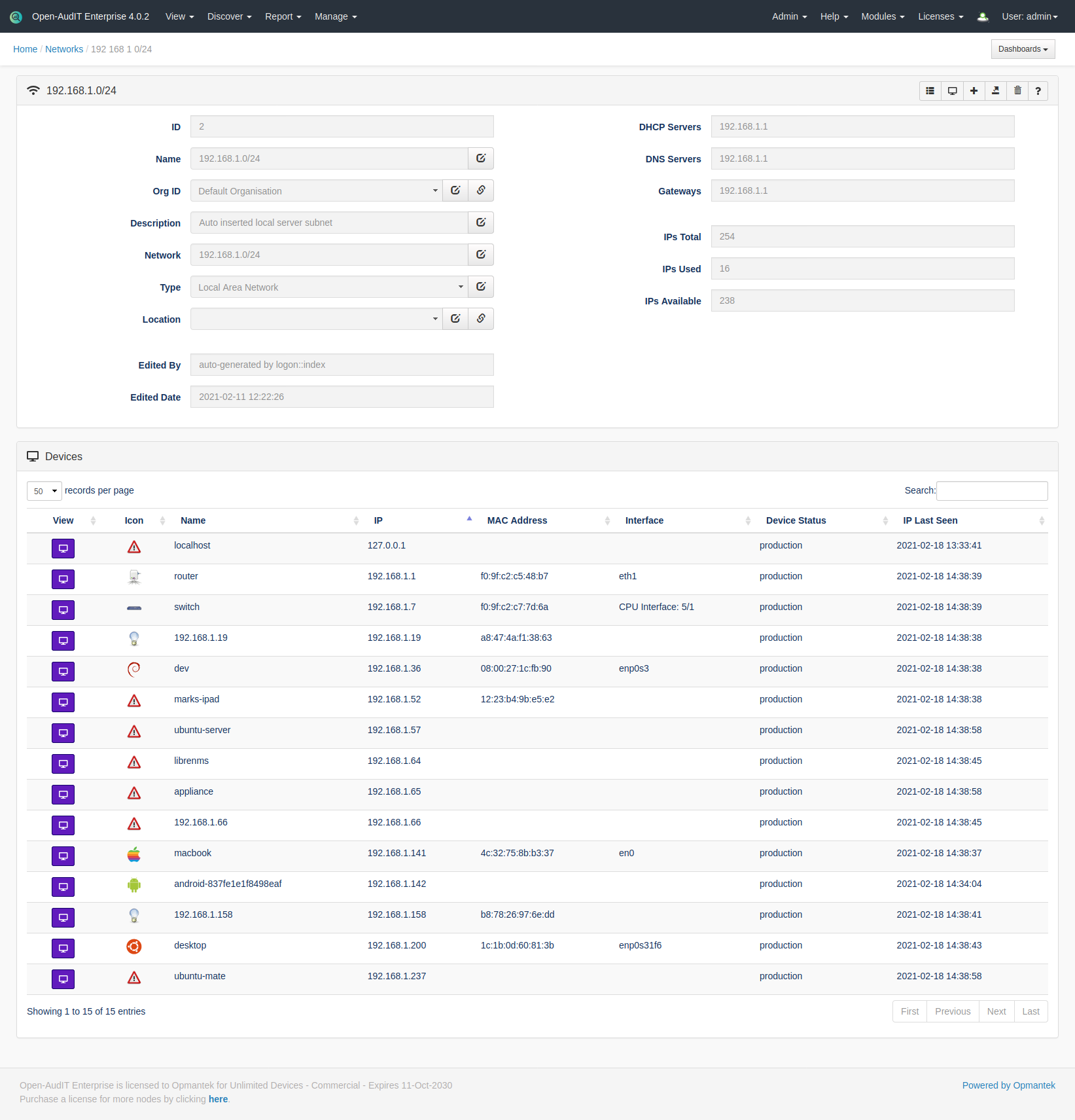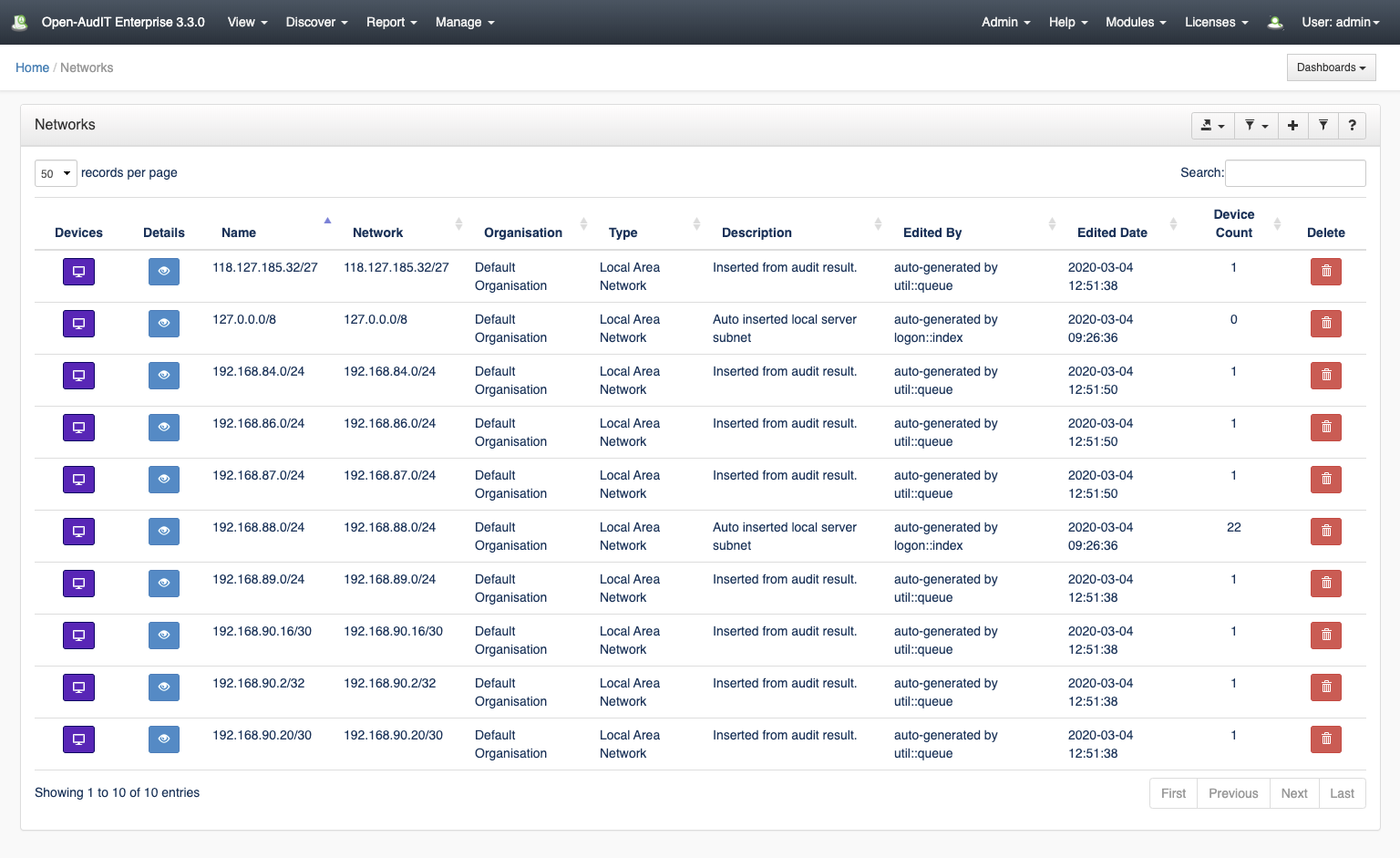...
To make another network go to menu: Manage -> Networks -> Create Network. Provide a name and an optional description.
View Network Details
...
There is also a drop down in the upper right hand side for Advanced. Click it and you'll see useful information about your environment.
Types of Networks
Open-AudIT Professional and Enterprise now (as at 2.2.3) have an attribute for the "type" of network. This is set to Local Area Network by default, but can be changed by the user as they see fit. The types supported are below (With thanks to Wikipedia).
...
For example, a large company might implement a backbone network to connect departments that are located around the world. The equipment that ties together the departmental networks constitutes the network backbone. When designing a network backbone, network performanceand performance and network congestion are critical factors to take into account. Normally, the backbone network's capacity is greater than that of the individual networks connected to it.
...
A global area network (GAN) is a network used for supporting mobile across an arbitrary number of wireless LANs, satellite coverage areas, etc. The key challenge in mobile communications is handing off user communications from one local coverage area to the next. In IEEE Project 802, this involves a succession of terrestrial wireless LANs.
Database Schema
The database schema
...
can
...
be found in the application
...
is the user has database::read permission by going to menu: Admin -> Database -> List Tables, then clicking on the
...
details button for the table.
| Code Block | ||||
|---|---|---|---|---|
| ||||
CREATE TABLE `networks` (
`id` int(10) unsigned NOT NULL AUTO_INCREMENT,
`name` varchar(200) NOT NULL DEFAULT '',
`network` varchar(200) NOT NULL DEFAULT '',
`org_id` int(10) unsigned NOT NULL DEFAULT '1',
`type` enum('Personal Area Network', 'Home Area Network', 'Local Area Network', 'Wireless Local Area Network', 'Campus Area Network', 'Metropolitan Area Network', 'Wide Area Network', 'Storage-Area Network', 'System-Area Network', 'Passive Optical Local Area Network', 'Enterprise Private Network', 'Virtual Private Network') NOT NULL DEFAULT 'Local Area Network',
`description` text NOT NULL,
`edited_by` varchar(200) NOT NULL DEFAULT '',
`edited_date` datetime NOT NULL DEFAULT '2000-01-01 00:00:00',
PRIMARY KEY (`id`)
) ENGINE=InnoDB AUTO_INCREMENT=4 DEFAULT CHARSET=utf8; |
Example Database Entry
Networks are stored in the database in the "networks" table. A typical entry will look as below.
| Code Block | ||||
|---|---|---|---|---|
| ||||
id: 3
name: 192.168.1.0/24
network: 192.168.1.0/24
org_id: 1
type: Local Area Network
description: Auto inserted local server subnet
edited_by: Administrator
edited_date: 2017-05-29 10:47:33 |
API / Web Access
You can access the
...
collection using the normal Open-AudIT JSON based API. Just like any other collection. Please
...
see The Open-AudIT API documentation for further details
...
API Routes
...
...
...
...
...
...
...
.
...
Web Application Routes
...
...
...
...
...
...
...




